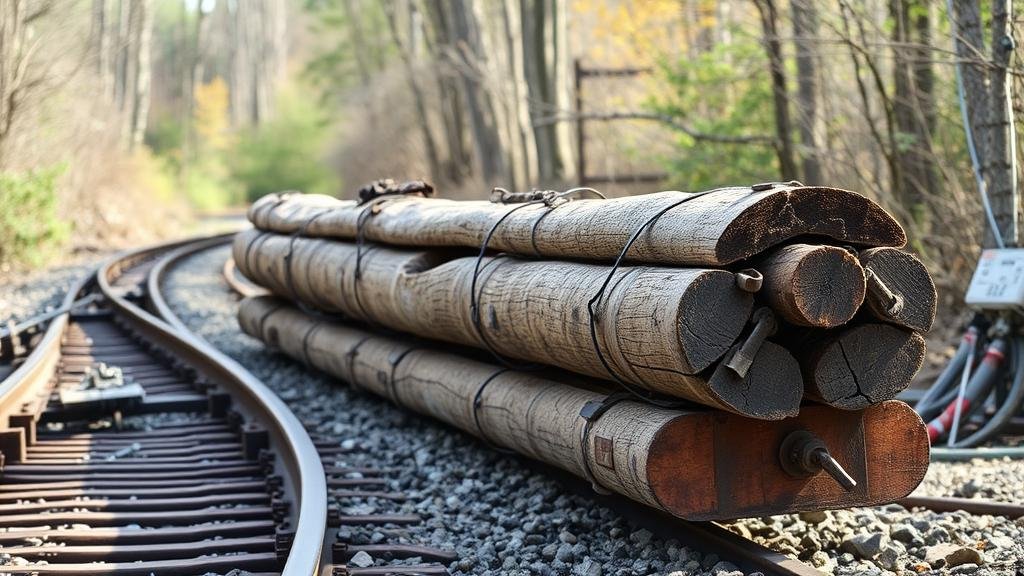Exploring Historical Rail Line Construction Logs for Lost Tools
Exploring Historical Rail Line Construction Logs for Lost Tools
This research article aims to investigate the historical rail line construction logs to uncover instances of lost tools during the building and maintenance of railway infrastructure. The need for such an investigation arises from the increasing interest in heritage preservation and the potential for archaeological insights that can be derived from understanding the material culture of rail construction in the late 19th and early 20th centuries. This article particularly focuses on archival methods utilized to analyze these logs and their implications for contemporary railway archaeology.
Historical Context of Railway Construction
The expansion of the railway system in the United States during the mid-1800s to early 1900s marked a significant turning point in transportation and infrastructure development. Notably, the First Transcontinental Railroad, completed in 1869, showcased a monumental engineering achievement that facilitated commerce and migration. But, the construction process was not without its challenges, including tool loss, which has implications for the understanding of work practices in that era.
Early rail construction involved the utilization of various tools, from basic hand tools to more complex machinery, all contributing to an efficient workflow. For example, the use of manual handcars, spiking hammers, and track laying machines were prevalent. Also, lost tools could indicate not only inefficiencies but also safety concerns and labor practices at the time.
Methodology of Tool Loss Documentation
The investigation relies primarily on archival research, specifically examining construction logs maintained by railway companies. These logs serve as primary sources and often include details on tool inventories, daily construction reports, and incident logs regarding lost items. To be effective, this research utilizes a systematic approach including:
- Collection of construction logs from various railway archives.
- Analysis of the logs for mentions of tools, particularly those noted as lost.
- Correlating tool loss incidents with specific dates and locations of rail construction.
- Cross-referencing with workforce documentation to assess labor conditions.
Significant Findings from Construction Logs
Preliminary analysis of construction logs from the Pennsylvania Railroad Company, dating from 1890 to 1920, has revealed significant instances of tool loss. For example, logs from 1895 documented over 150 reported lost tools on a single stretch of line between Harrisburg and Pittsburgh. Specific tools frequently noted as lost included:
- Shovels and Picks – Useful for earth moving.
- Rail Tongs – Essential for laying tracks.
- Measuring Tapes – Critical for alignment and planning.
Statistics carried forward from the archives indicate that an average of 10% of all issued tools were reported lost during peak construction years, showing a correlation with periods of heavy labor demands.
Implications of Tool Loss
Understanding the nuances of tool loss provides insights into workforce dynamics, safety protocols, and the economic implications of tool replacement. For example, frequent tool loss unambiguously indicates a high-stress work environment, possibly exacerbated by long hours and inadequate management strategies. Also, the financial implications are non-trivial; replacing lost tools could contribute to budget overruns that present logistical challenges for railway companies.
Real-World Applications
Insights from exploring these logs can benefit contemporary railway operations by improving equipment management and workforce training. Applying these historical lessons, current rail companies may institute better inventory management practices and focus on providing workers with the resources they need to minimize tool loss. Plus, it emphasizes the importance of historical preservation in improving modern practices in infrastructure development.
Conclusion and Actionable Takeaways
This exploration of historical rail line construction logs demonstrates the vital role that lost tools play in reconstructing labor practices and understanding the historical framework of the railway industry. Key takeaways include:
- Valuing archival research as a tool for discovering hidden aspects of industrial history.
- Recognizing the implications of labor efficiency and safety in historical contexts can inform current practices.
- Encouraging railway companies to enhance workforce training and inventory systems based on historical patterns.
As the demand for transportation infrastructure continues to grow, drawing lessons from the past can lead to better practices, safer work environments, and efficient project management in the modern railway sector.



